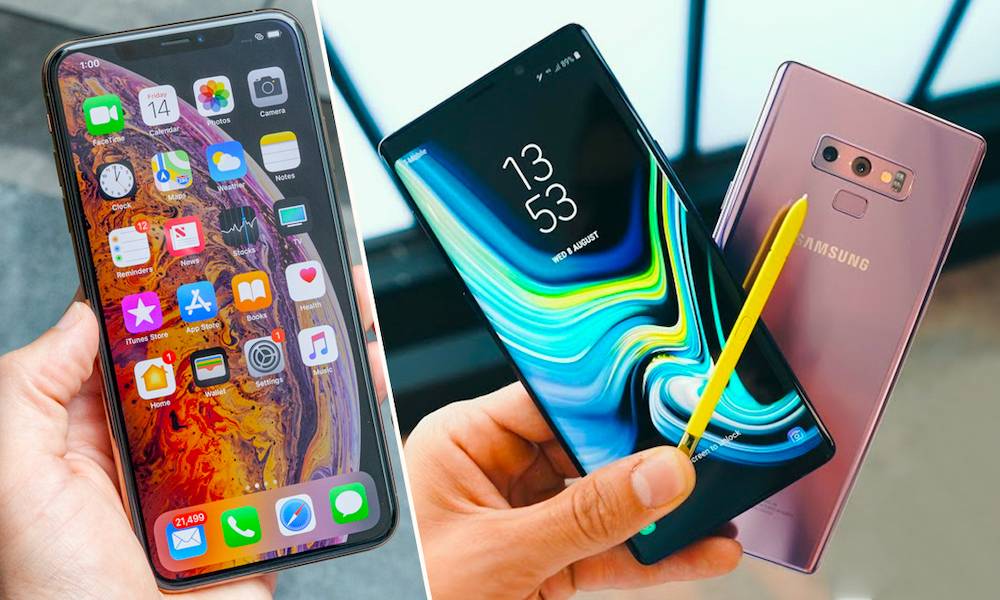iPhone XS Max Just Killed the Galaxy Note 9 in Every Performance Test
 Credit: NewsBeezer
Credit: NewsBeezer
Toggle Dark Mode
When Samsung unveiled its next-generation Galaxy Note 9 back in August, executives flaunted the phablet’s “class-leading performance,” which presumably meant in relation to other high-end smartphones offered by its competitors, including Apple.
It didn’t take long for tech bloggers and their real-world testing to effectively debunk those claims, as we witnessed the Galaxy Note 9 be handily put to shame by Apple’s year-old iPhone X shortly after it dropped..
But now, place two brand-new and even more advanced iPhone XS models thrust into the mix, and what they bring to the table is truly game-changing.
If you thought the A11 Bionic’s performance was stellar on the iPhone X, well, you’re in for quite a treat this morning as our good friends over at AppleInsider have compiled an all-new spate of benchmark tests, pitting the A12 Bionic-equipped iPhone XS Max head-to-head against Samsung’s Galaxy Note 9 on nearly every metric.
Core Performance
As it’s done historically in the past, Samsung outfitted its fall 2018 flagship with the same CPU that’s powering its spring 2018 flagships, the Galaxy S9 and S9+.
In other words, the chip (Qualcomm’s Snapdragon 845) is already somewhat outdated, though Samsung will have us know it’s still “class-leading performance”…
Technically, the Snapdragon 845 is an octa-core (eight-core) CPU consisting of four performance cores clocked at 2.8 GHz, four efficiency cores running at up to 1.7 GHz, and topped with an Adreno 630 GPU which Qualcomm says is “30 percent faster, 30 percent more efficient, and offering 2.5x display throughput” in comparison to the GPU used in last-year’s Galaxy Note 8.
In comparison, Apple’s new custom-designed A12 Bionic, which is the heart and brains of this year’s iPhone XS, XS Max and upcoming XR, is a hexa-core (six-core) CPU built around the industry’s most advanced 7 nanometer (nm) FinFET fabrication process.
The powerful A12 Bionic is comprised of two high-performance cores, alongside four efficiency cores clocked at 2.49 GHz, which is just slightly higher than the 2.39 GHz clock speed of last-year’s A11 Bionic.
Also worth noting is that the A12 integrates a number of advanced features, including a new Apple-designed four-core GPU, which is up from the three-core GPU on iPhone X.
Breaking Down the Numbers
Worth pointing out is that the Note 9 is available in two configurations — one boasting 128 GB of storage and 6 GB of RAM, and a higher-tier variant with 512 GB of storage and a whopping 8 GB of RAM.
Apple has capped this year’s iPhone models at just 4 GB of RAM. And though that’s still 1 GB more than last-year’s iPhone X had, it really makes no difference either way: iPhone XS Max absolutely destroys Samsung’s latest and greatest Galaxy Note 9.
- Starting off with single-core Geekbench 4 performance scores (higher is better), Apple’s iPhone XS Max scored 4,803 — nearly double the Galaxy Note 9’s score of 2451.
- In multi-core GB4 testing, the iPhone XS Max scored 11,448 in comparison to 8,830 for the Galaxy Note 9.
- In the standard Geekbench GPU test, Samsung’s Galaxy Note 9 scored 13,980, however Apple’s iPhone XS Max scored 22,527 — an absolutely remarkable improvement even over the 15,301 achieved by iPhone X in previous testing.
- In Antutu testing, where Samsung devices typically outperform Apple’s by wide margins, Samsung’s Note 9 scored 279,773 — for example, in comparison to just 200,937 for the iPhone X. However the iPhone XS Max obliterated the Note 9 even more, achieving a massive 364,287 points in comparison to the Note 9’s second showing of 284,402.
- Antutu’s CPU test, meanwhile, garnered scores of 134,887 for the iPhone XS Max, in comparison to the Galaxy Note 9’s score of 87,894.
- The Galaxy Note 9 performed well in Antutu’s HTML 5 test, garnering a score of 37,466; however the iPhone XS Max handily smoked it yet again with 46,311.
- Another internet browser benchmark, Octane 2.0, garnered scores of 43,180 for the iPhone XS Max in comparison to the Note 9’s 20,165, which proves that Apple’s Safari browser is highly optimized for performance and speed in comparison to the Note 9’s stock web browser.
- Lastly, the team ran both handsets through GFXBench OpenGL’s 1080p Manhattan Offscreen test to measure display performance, which saw iPhone XS Max once again top the Note 9 with a score of 7,569 to 5,148
Conclusion
There’s really not much to say here since the numbers speak for themselves: Apple’s iPhone XS Max is an absolute powerhouse to be reckoned with and it may very well be beat one day down the road, but not this year, and certainly not by Samsung’s latest Galaxy Note.
But that’s to be expected when you decide to cram aging hardware into next-generation device. Luckily for iPhone users, Apple and its custom-designed A-series silicon will always be a few thousand points ahead of the curve.






